QuestionHello again I asked you sevral questions about compatible fish & setting up a tank yesterday, I THnik I will set up my 33 gallon I have instead of buying a 20 gallon starter kit because I can have more fish in the 33 gallon. I would like some: guppies, orange sword tails, dalmation mollies, orange platys, goast shrimp, dwarf frogs, some sort of algie eater, cat fish or if there compatible a few algie eating shrimps will do, A mystery/apple snail or two(do these multply easily as I don't want to end up with fifty), can a pair of zebra dinos be mixed in with these? Also I was wondering is neon tetras could live with the guppies, shrimp, snails, frogs, sword tails, platys, algie eater(s)& mollies?
Is it possible to have too many algie eating fish in a tank? as I'd like a snail & a catfish or pelco.(will a pelco eat my shrimp & frogs?)
When the tank needs to be changed should I change the whoel tank & wash the gravle? or should I do parcel water changes? doesnt the tank need to be completly cheanged every now and then? when the complete change must be done where should I put the fish? Also algie eaters stick to the tank quite firmly as I've had a past experinace with one I just could not get off the tank to clean it, how do I get the algie eater/snails to get off the tank walls when I must change it?
Thanks.
AnswerHi;
Remember to start very slow. Get only 3 one-inch long fish for the first 6 to 8 weeks. Swords and Platies are good for starter fish. They are hardy and can tolerate the stress of new tank syndrome.
The other fish and shrimps you mentioned are fine together. Snails too. Don't worry about mystery/apple snails over-multiplying. They don't lay eggs all over the tank like the little snails do. They lay a big bunch above the water and they can be removed if you don't want them. Here is a web site about all the different kinds and how to care for them;
http://www.applesnail.net/
They really are cool little fellas. To control algae, you should depend on a plecostamus instead. These big snails may not want to mess around with small stuff like algae. They like big chunks of stuff like lettuce, cucumber, beans, etc. Go to the feeding section on the snail site to find out more about it.
Zebra Danios would live with the fish you have decided on, but don't overcrowd the tank. The maximum safe population for your tank is 33 total inches of adult fish, but AFTER it is fully broken in and the fish must be gradually added over a period of weeks. The guppies, swords, mollies, platies, cory cats and zebra danios are all schooling fish and should have at least a couple of their own kind with them. Once break-in is over, add a couple of fish every week to let the beneficial bacteria multiply a bit more to consume the waste of the new population. Slowly build up to your population that way.
Catfish really don't eat algae, they eat extra food. A small variety of plecostamus like bristlenose or clown is a good choice to eat algae. They get about 6 inches long. The regular ones get over a foot long! Just one will be enough for a 33 gallon tank.
When cleaning your tank you should never have to remove all the water and the fish unless something is drastically wrong. It kills the beneficial bacteria that consumes fish waste. Removing the fish is very stressful to the fish and they have to go through the break-in all over again too. It is VERY dangerous to do that with a full fish population. Many or all could die. Just remove 25% of the water every week and replace it with fresh water. Vacuum the gravel at the same time. Aquarium vacuums are available at the local fish store. They can show you how to use it too. (Don't vacuum during the break-in period though. It disturbs your developing bacteria colonies too much.)
If I hadn't given you one yet, here is a copy of my article on new tanks to get you started;
**********
New Tank Syndrome or Break-in Period
So you have a new tank and you filled it up, put the filter together, mounted the heater into place and turned on the lights. You have all the plants and decorations where you want them....
You are ready for fish.
But, your filter is not ready for a full tank of fish yet.
The filter is running and moving the water and cleaning out crud, right? Of course!
But a very important part of your filter is the part you can't see. An aquarium filter removes the larger visible stuff, but it also must remove the dissolved fish waste that turns into ammonia in the water. To do this, special bacteria must grow in the filter system and on the particles of gravel in the bottom of your tank. This process occurs even on a limited scale in little fish bowls that have no filter in them.
This is "New-Tank Syndrome" or the "Break-in Period". The entire process takes 6 to 8 weeks to complete because these "nitrifying" bacteria grow quite slowly.
Start off with only two hardy fish for every ten gallons of water and don't add more until the 6 to 8 weeks has gone by. Hard to be patient, but it is worth it to keep your fish alive and healthy. As a matter of fact, the bacteria cannot develop without fish in the tank. You can let that tank sit forever without fish in it, but as soon as the first fish goes in the process begins. Avoid changing the filter pads during break-in. This removes the bacterial colonies that are essential to a balanced aquarium. You can rinse the filter pad out in a container of aquarium water. This will preserve most of the bacteria colonies while still allowing your filter to flow freely. Even using bacteria additives and water conditioners when you first set up the tank will not make a tank cycle by itself. If there are no fish to provide food (fish waste) for the bacteria, the beneficial bacteria cultures will die and you will have to start the colonies all over again once fish are added to the tank. Once the tank has completed the initial cycle, you can change the filter pads every 4 weeks or so. But for now, just rinse them.
Feed your new fish VERY lightly. Any excess food will cause additional waste your system cannot afford to have right now. If you see food floating around or lying on the plants and gravel after five minutes, too much food is going into the tank. Cut back a little each time you feed until it is ALL gone 5 minutes after you feed them. Feed them once a day.
During this "break-in period" your tank will become cloudy and milky looking. You may have to tolerate this for the entire break-in period but it is only temporary. Changing 25% of the water three times a week until the break-in period is over helps a great deal. Changing water reduces the ammonia and nitrites that rise while the bacteria continues to multiply. If ammonia and/or nitrites become too high, your fish will become stressed and possibly die. Use a good water conditioner when you replace the water and make sure it is the right temperature to avoid shocking your fish.
When the break-in is over after 6 to 8 weeks and there are no nitrites or ammonia present in the water you can slowly add more fish. Add one or two every week until you reach the desired population. This allows the bacteria to adjust to the new population every time before adding more. Monitor the nitrites and ammonia to be sure they don't come up. If they do, make a 25% water change and check them again. Don't add the next fish until the levels are down again.
The safe maximum population for any size tank is one inch of adult fish for every gallon of water in the tank. Do some research to be sure of the fish you are interested in. Even though they are small when you buy them, you have to base your population calculations on full-sized adult fish. Many hobbyists have up to two inches per gallon but this can be risky. If a water quality issue arises or a disease occurs it will spread fast and furious in an over-populated tank. In any case, 25% water changes every week to two weeks are absolutely essential for the health of your fish.
Following these guidelines will help you get your new tank on the right track.
**********
Followups welcome
At Your Service;
Chris Robbins
Come on over and join us on the freshwater fish forum at About.com to get even more information too;
http://freshaquarium.about.com/od/questionsanswers/a/naavigateforum.htm
My member name is ChrisR62. See You There!

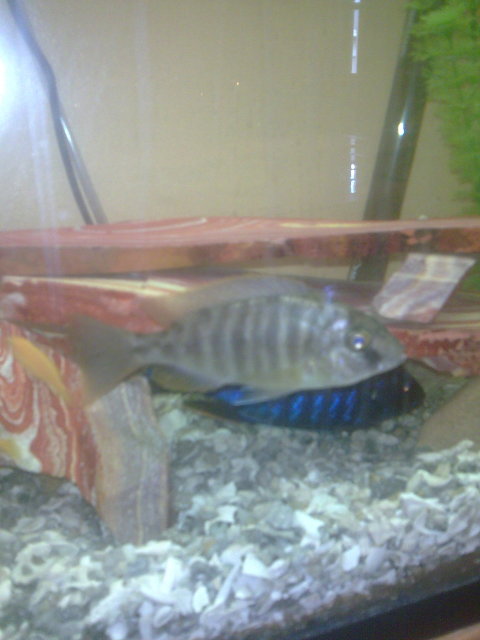 cichlids (malawi)
QuestionQUESTION: Is there a way to tell the difference
cichlids (malawi)
QuestionQUESTION: Is there a way to tell the difference
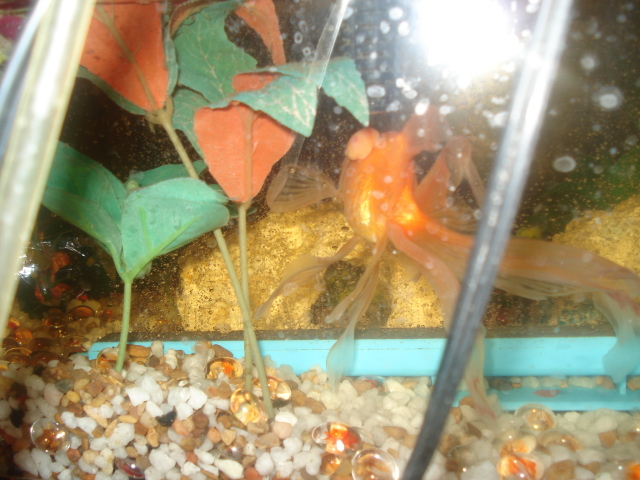 Lump On Fancytail Goldfish
QuestionQUESTION: Please help! I am so concerned for my
Lump On Fancytail Goldfish
QuestionQUESTION: Please help! I am so concerned for my
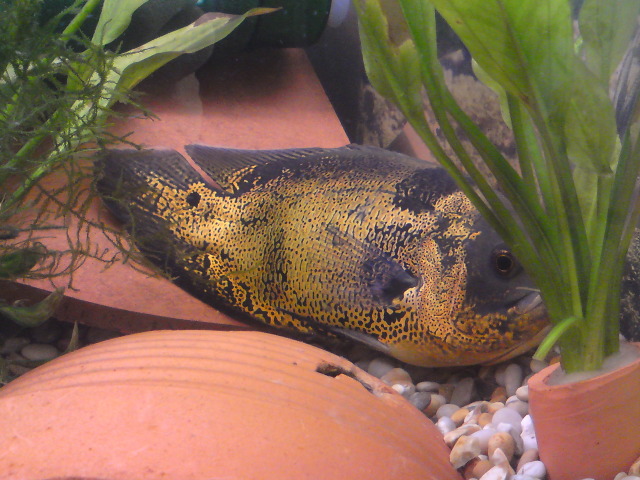 My Oscar is acting very strange, need help.
Question
Oscar 1
Hello,
My Oscar is in a 6ft x 2ft x 2
My Oscar is acting very strange, need help.
Question
Oscar 1
Hello,
My Oscar is in a 6ft x 2ft x 2
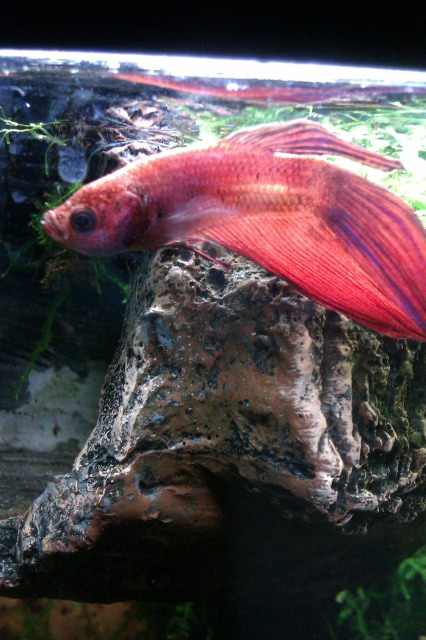 Betta Health Issues
Question
Close-up of betta whole body shot
Betta Health Issues
Question
Close-up of betta whole body shot
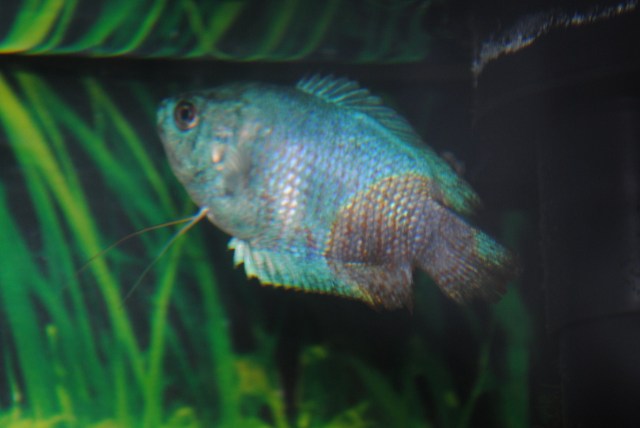 Sick new fish
Question
gourami
I bought 2 gouramis at Petsmart yester
Sick new fish
Question
gourami
I bought 2 gouramis at Petsmart yester